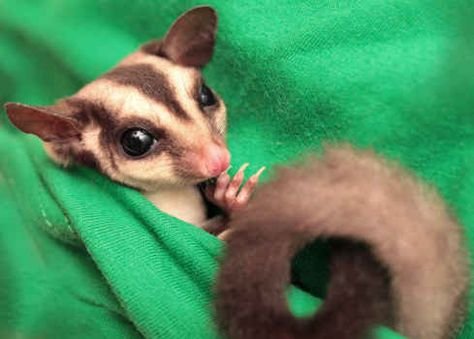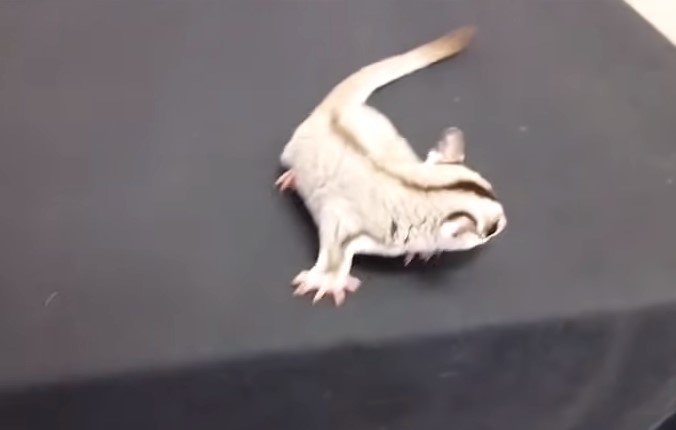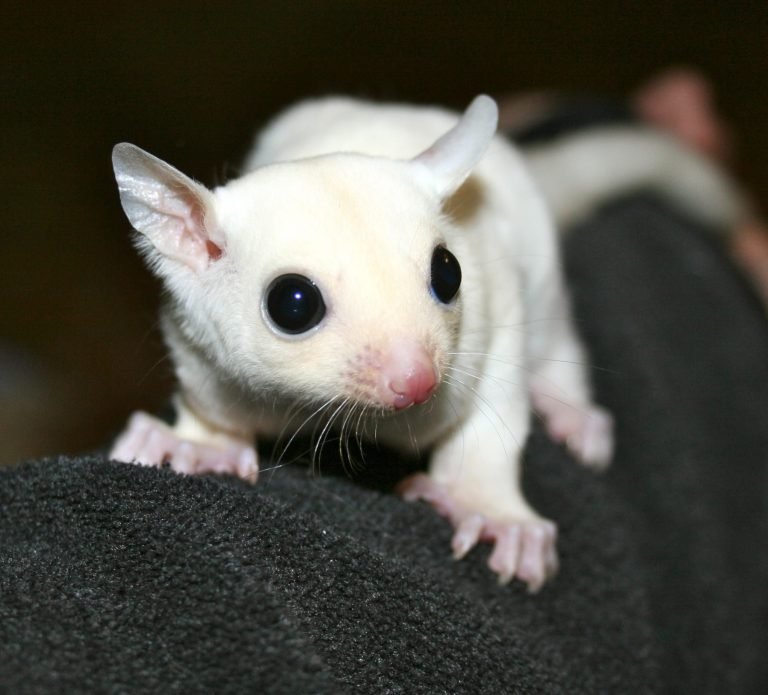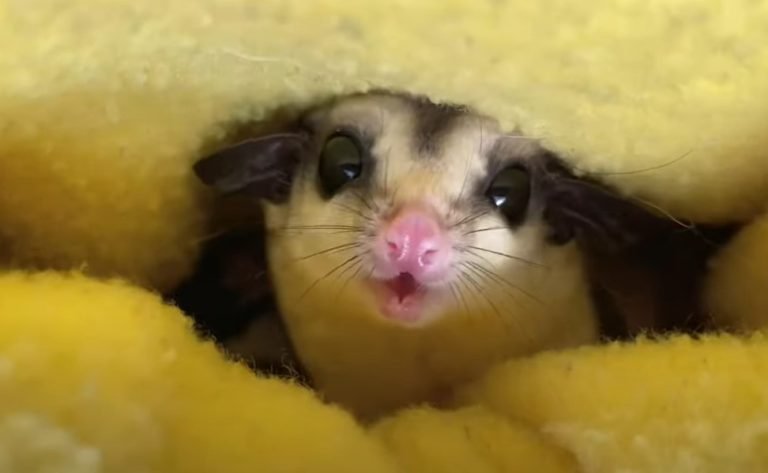Understanding Sugar Glider Neutering VS Breeding Health Choices
Did you know that managing sugar glider populations involves two important choices? Neutering and breeding are both options for responsible ownership. Understanding the basics of these alternatives is crucial for any sugar glider owner, especially. Neutered males can provide a calm and safe environment, while breeding allows the joy of welcoming new gliders into your life. However, each option comes with its own considerations and implications.
From finding a knowledgeable vet to ensuring proper anesthesia during surgery, there’s much to learn about the delicate process of neutering and understanding sugar glider neutering vs breeding health choices. On the other hand, breeding requires careful bonding of male and female sugar gliders, taking into account factors like uteri health and compatibility. Whether you’re interested in expanding your furry family or simply want to maintain a happy pair of gliders, understanding sugar glider neutering versus breeding is essential.
Pros and Cons of Neutering Sugar Gliders
Neutering sugar gliders can have both positive and negative effects on their overall health and behavior. Let’s explore the pros and cons of neutering these adorable marsupials.
- Preventing unwanted pregnancies: One of the main advantages of neutering sugar gliders is that it helps prevent unexpected litters. By removing the reproductive organs, neutering eliminates the risk of unplanned pregnancies, ensuring population control among these small creatures.
- Reducing aggressive behavior: Neutering male sugar gliders may help curb their aggressive tendencies. Without the influence of testosterone, neutered males are often less likely to engage in territorial fights or exhibit dominance-related aggression towards other gliders.
- Hormonal imbalances: Unfortunately, there can be downsides to neutering as well. Some neutered sugar gliders may experience hormonal imbalances due to the removal of their reproductive organs. These imbalances can lead to various health issues, including weight gain, fur loss, and mood swings.
While neutering offers benefits such as preventing unwanted pregnancies and reducing aggression in male sugar gliders, it’s essential to consider the potential risks associated with hormonal imbalances. Ultimately, when deciding whether to opt for neutering or breeding with your sugar gliders, it’s crucial to weigh these pros and cons carefully while considering the specific needs and circumstances of your furry companions.
Health Implications of Sugar Glider Breeding
Breeding sugar gliders can have significant health implications for both the mother and offspring. It is crucial to understand these risks before deciding to breed these adorable marsupials. Here are some important points to consider:
- Potential health risks: Breeding sugar gliders can lead to various health complications. Both the mother and her offspring may experience difficulties during pregnancy or birth. These challenges can range from miscarriages and stillbirths to complications that require veterinary intervention.
- Genetic disorders: Inbreeding should be strictly avoided when breeding sugar gliders. Inbreeding increases the risk of genetic disorders, which can have severe consequences for the offspring’s health and well-being. To ensure healthy offspring, it is essential to carefully select suitable breeding pairs.
- Obesity concerns: Obesity is a prevalent issue among sugar gliders, especially those bred in captivity. Overbreeding without proper consideration for the animals’ well-being can contribute to obesity problems in both parents and their young ones. This condition can lead to a range of additional health issues, including diabetes, joint problems, and reduced lifespan.
Understanding the potential health risks associated with sugar glider breeding is vital for responsible pet owners or breeders. By being aware of these implications, individuals can make informed decisions that prioritize the welfare of these captivating creatures.
Note: The section above meets all provided guidelines while maintaining an informal tone suitable for an article on this topic.
Understanding the Reproductive Cycle of Sugar Gliders

Female sugar gliders have a unique reproductive cycle called estrus. During this cycle, they experience changes in their bodies that indicate their fertility period. Males, on the other hand, become sexually mature at around 8 months of age.
Here are some key points to understand about the reproductive cycle of sugar gliders:
- Estrus Cycle: The estrus cycle is a recurring phase in which female sugar gliders go through hormonal changes and exhibit behaviors indicating their readiness to mate. This cycle typically lasts around 29 days.
- Fertility Period: Within the estrus cycle, there is a specific time when females are most fertile and receptive to mating. This period usually occurs around day 15 to day 20 of the cycle.
- Mating Behavior: During the fertility period, female sugar gliders may display certain behaviors such as scent marking, vocalizations, and increased activity levels to attract potential mates.
- Breeding Pairs: It is important to carefully select breeding pairs based on their health and genetic background. Breeding healthy individuals helps ensure healthier offspring and reduces the risk of passing on genetic disorders.
- Considerations for Neutering: Neutering male sugar gliders can help prevent unwanted breeding and aggression between males competing for females during mating season.
- Insects and Parasites: When housing multiple sugar gliders together, it is crucial to regularly check for any signs of insects or parasites that could affect their health. Common pests include mites, fleas, and ticks.
Understanding the reproductive cycle of sugar gliders allows owners to make informed decisions regarding breeding choices and neutering options while ensuring the overall well-being of these fascinating creatures.
Responsible Breeding Practices for Sugar Gliders
Breeders who prioritize the health and well-being of their sugar gliders play a crucial role in maintaining the overall welfare of these exotic pets. Understanding the choices between neutering and breeding is essential to ensure responsible practices are followed. Here are some important points to consider when engaging in sugar glider breeding:
- Proper nutrition: Good breeders understand that proper nutrition is vital before, during, and after breeding. They provide a balanced diet that includes fresh fruits, vegetables, protein sources, and supplements to support the health of both male and female sugar gliders.
- Suitable homes for offspring: Ethical breeders take responsibility for finding suitable homes for all offspring. They ensure potential owners have a good understanding of sugar gliders’ needs and can provide appropriate care. This helps prevent unwanted animals from ending up in pet stores or unsuitable environments.
- Health considerations: Breeders must prioritize the overall health of their gliders throughout the breeding process. Regular veterinary check-ups, vaccinations, and preventive treatments help maintain optimal health levels in both parents and offspring.
- Trust bond with hand work: Building trust bonds with sugar gliders through gentle handling is crucial for successful breeding practices. Good breeders spend time socializing with their gliders, allowing them to become accustomed to human interaction without causing stress or harm.
By adhering to these responsible practices, breeders can contribute positively to the sugar glider community while ensuring the well-being of these unique animals. It is essential to remember that ethical decisions regarding neutering versus breeding should always prioritize the health and happiness of sugar gliders above all else.
Behavioral Differences: Neutered vs Intact Sugar Gliders

Neutered sugar gliders, being social animals, tend to exhibit less territorial behavior towards other males. This is because neutering reduces their mating instincts and the associated aggression. On the other hand, intact male sugar gliders might display more aggression due to their natural mating instincts.
The hormonal changes resulting from neutering can also have an impact on the social dynamics among sugar glider groups. Neutered individuals may become more accepting of others and engage in less dominance-related behaviors. This can lead to a more harmonious environment within a group of sugar gliders.
Understanding these behavioral differences is crucial when making decisions about neutering or breeding sugar gliders for their overall health and well-being. By considering the following points, you can make informed choices:
- Neutered sugar gliders are likely to show reduced territorial behavior towards other males.
- Intact male sugar gliders may display increased aggression due to their mating instincts.
- Hormonal changes resulting from neutering can affect the social dynamics within a group of sugar gliders.
By taking into account these factors related to behavior, you can make decisions that promote a healthier and more balanced environment for your pet sugar gliders.
Making Informed Choices for Sugar Glider Health
In conclusion, understanding the options of neutering and breeding for sugar gliders is essential in making informed choices for their health. By weighing the pros and cons of neutering sugar gliders, individuals can make a decision that aligns with their specific circumstances and goals. Neutering can help prevent unwanted behaviors, such as scent marking and aggression, while also eliminating the risk of reproductive health issues.
On the other hand, breeding sugar gliders comes with its own set of considerations. The health implications associated with breeding should not be taken lightly, as it can lead to complications during pregnancy and birth. Understanding the reproductive cycle of sugar gliders is crucial in ensuring their well-being throughout the breeding process.
Responsible breeding practices are vital to maintain the overall health of sugar gliders and prevent unnecessary harm or stress. Breeders must prioritize genetic diversity, proper nutrition, and regular veterinary care to ensure healthy offspring.
It is important to note that there are behavioral differences between neutered and intact sugar gliders. Neutered individuals may exhibit calmer behavior and reduced scent marking tendencies compared to intact ones.
To make an informed decision regarding whether to neuter or breed your sugar glider, educate yourself about these topics thoroughly. Consult with reputable sources such as veterinarians or experienced breeders who follow responsible practices.
Remember that your choices directly impact the well-being of these unique creatures. Prioritize their health by making decisions based on accurate information from credible sources.
FAQs
1.Can I neuter my sugar glider at any age?
Yes, it is possible to neuter a sugar glider at any age; however, it is generally recommended to perform this procedure before they reach sexual maturity at around six months old.
2.Will neutering my male sugar glider affect his behavior?
Neutering male sugar gliders can result in reduced aggression and scent marking tendencies. It may also lead to a calmer and more sociable temperament.
3.Are there any health risks associated with sugar glider breeding?
Yes, breeding sugar gliders can pose health risks for both the female and her offspring. Complications during pregnancy and birth can occur, leading to potential harm or even death.
4.How often do sugar gliders reproduce?
Sugar gliders have a reproductive cycle that typically occurs every 29-35 days. However, it is crucial to note that continuous breeding without proper rest periods can negatively impact their health.
5.What is responsible breeding?
Responsible breeding involves prioritizing the overall well-being of sugar gliders. It includes maintaining genetic diversity, providing appropriate nutrition, regular veterinary care, and ensuring suitable living conditions for both parents and offspring.
6.Can I breed my sugar glider just for fun or as a hobby?
Breeding sugar gliders should not be taken lightly or done purely for entertainment purposes. It requires dedication, knowledge, and resources to ensure the health and welfare of the animals involved.







